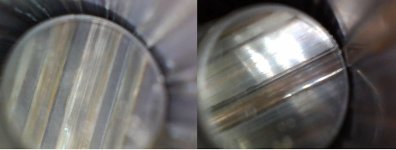Geezerbiker
New member
I use both mineral spirits and acetone in my business so pilfering a cup now and then isn't a problem. I'm the boss so there's no one to complain... 
Like Ed always said automatic transmission fluid is a great gun oil and I always have an extra bottle around for the truck and take what I need for my guns. The last ingredient deodorized kerosene, isn't a problem either. I keep some on hand for my oil lamps in case of a power outage.
So I mix it up a quart at a time and I have a couple old steel gunpowder cans that I keep it in. One of the great things is one can afford to have enough on hand to soak larger gun parts in like M1911 frame or a whole revolver if needed...
Back to reloading, Ed used to say to take a tumbler of fresh media and dump in an ounce of Ed's Red and then run it with the lid off until the clumps all broke up and the media looked dry. Then it would do a better job of cleaning cases. I can't remember if I ever tried that but since all my tumbling media is dirty, I'll try it with the next tumbler full. I had gotten a bottle of Midway brass cleaner and polish with my tumbler all those years ago and I finally finished it up...
I do miss the FidoNet days but times change... I think most of the guys on that forum have passed on, or at least the ones I knew best have.
Tony
Like Ed always said automatic transmission fluid is a great gun oil and I always have an extra bottle around for the truck and take what I need for my guns. The last ingredient deodorized kerosene, isn't a problem either. I keep some on hand for my oil lamps in case of a power outage.
So I mix it up a quart at a time and I have a couple old steel gunpowder cans that I keep it in. One of the great things is one can afford to have enough on hand to soak larger gun parts in like M1911 frame or a whole revolver if needed...
Back to reloading, Ed used to say to take a tumbler of fresh media and dump in an ounce of Ed's Red and then run it with the lid off until the clumps all broke up and the media looked dry. Then it would do a better job of cleaning cases. I can't remember if I ever tried that but since all my tumbling media is dirty, I'll try it with the next tumbler full. I had gotten a bottle of Midway brass cleaner and polish with my tumbler all those years ago and I finally finished it up...
I do miss the FidoNet days but times change... I think most of the guys on that forum have passed on, or at least the ones I knew best have.
Tony

